Scramble to get Indians home to villages to isolate
With its famous train system shut down, Indian authorities have sent a fleet of buses to the outskirts of India’s capital to meet an exodus of migrant workers desperately trying to reach their home villages during the world’s largest coronavirus lockdown.
Indian authorities have sent a fleet of buses to the outskirts of India’s capital to meet an exodus of migrant workers desperately trying to reach their home villages during the world’s largest coronavirus lockdown.
India’s network of trains, the country’s lifeblood, has been idled.
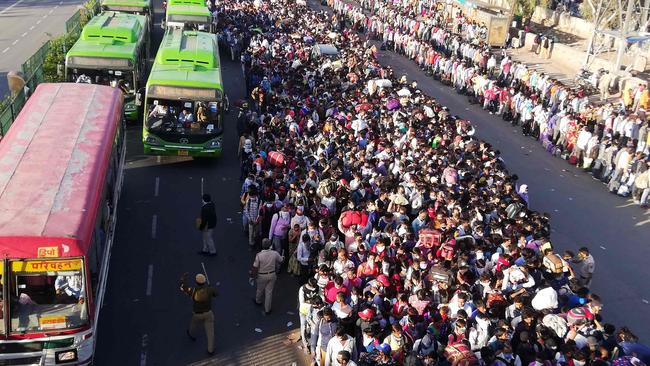
Prime Minister Narendra Modi asked the country’s 1.3 billion people this week to stay indoors for three weeks in the world’s biggest lockdown, seeking to curb the spread of the illness.
Thousands of people, mostly young male day labourers but also families, fled their New Delhi homes after Prime Minister Narendra Modi announced a 21-day lockdown that began on Wednesday and effectively put millions of Indians who live off daily earnings out of work.
Construction projects, taxi services, housekeeping and other informal sector employment came to a sudden halt.
Modi said the extreme measure was needed to halt the spread of the coronavirus in India, which has confirmed 775 cases and 19 deaths, and where millions live in cramped conditions without regular access to clean water.
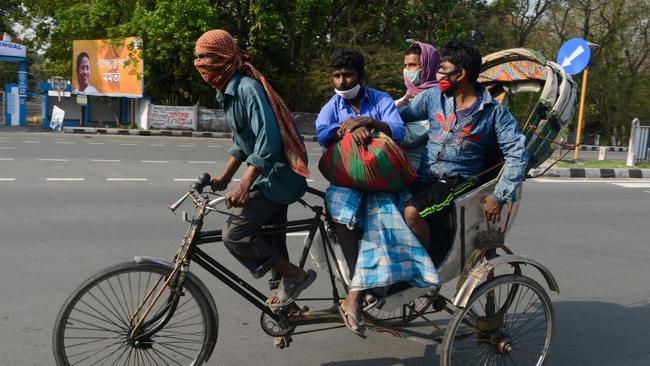
India’s finance ministry announced a 1.7 trillion ($22 billion) economic stimulus package that will include delivering grains and lentil rations for three months to 800 million people, about 60 per cent of the world’s second-most populous country.
But thousands of India’s most vulnerable, who fear dying not of the disease caused by the new virus but rather of starvation, have decided not to wait.
Ram Bhajan Nisar, a painter, his wife and two children, ages 5 and 6, were part of a party of 15 who set off by foot from New Delhi to Gorakhpur, a village on the border with Nepal some 650km away.
“How can we eat if we don’t earn?” Nisar said, adding that his family had enough to make it four or five days without work but not the full three weeks of the stay-at-home order.
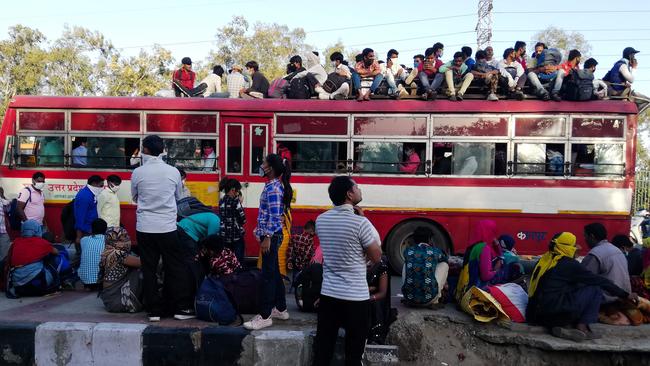
The government of Uttar Pradesh state, which borders New Delhi, sent a fleet of public and private buses with room for 52,000 people to a highway overpass area on the Delhi border where thousands were stranded, according to state government spokesman Awanish Awasthi.
The government also dispatched medical teams to screen bus passengers at city bus stops.
At the stops, police jeeps and vans will ferry people the rest of the way to their villages, Awasthi said.
Nisar said Saturday that a bus had taken his family overnight from the border overpass area to the Uttar Pradesh district of Shahjahanpur.
From there, they walked and hitchhiked on a farm tractor trolley, their hunger temporarily abated by a meal in a Sikh temple and handouts from good Samaritans on the road as they inched closer to home.
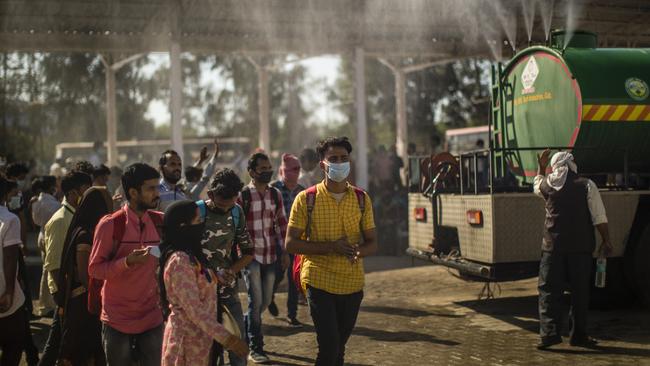
They planned to wait at a bus stop for government transport to take them the rest of the way.
If no bus stopped, Nisar said, the group would continue walking or hitchhiking until they reached their villages.
Arvind Kejriwal, the top elected official in New Delhi, said on Twitter that both the Uttar Pradesh government and the Delhi government had arranged buses for the stranded workers.
“I still appeal to everyone to stay where they are,” he said.
“We have made arrangements for living, eating, drinking everything in Delhi. Please stay at your home. Do not go to your village. Otherwise, the aim of the lockdown will be over.”
Meanwhile, there are plans afoot to use unused train carriages as isolation wards for coronavirus patients.
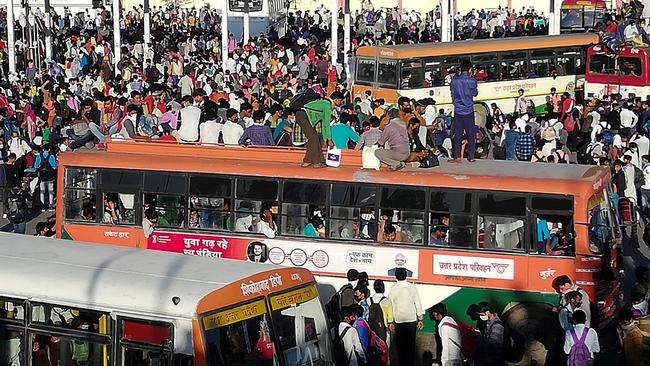
One train coach has been turned into a prototype quarantine facility, state-owned Indian Railways said in a statement on Saturday.
Once they get clearance, the plan is for each of India’s railway zones to convert 10 coaches into such wards every week, the company added.
Indian Railways has 16 zones, according to its website.”
Railways will offer clean, sanitised and hygienic surroundings for the patients to comfortably recover,” tweeted railways minister Piyush Goyal.
He did not specify how many people could be cared for in each coach. India has so far reported 873 confirmed cases, including 19 deaths.
